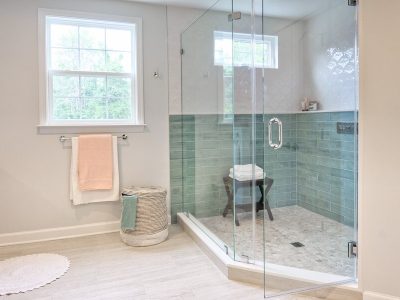The main purpose of having a multi-channel home theatre is to get an immense listening and viewing experience. Though your home theatre system can be as simple as a 32 inch LED or LCD TV along with a soundbar or a home theatre is a box system.
But having a multi-channel home theatre system is something beyond the experience of having just a simple home theatre, of course. But there are some things that you should know about them. And here I will guide you with everything that you need to know.
Home Theatre Room Setup
The size of the room where you are going to set up your multi-channel home theatre. Apart from the size of the room, there are some more things that you have to consider here. And they are as follows.
1. Presence Of Ambient Light
The ambient light can be the cause of screen surface reflection or screen glare for TVs. And when it comes to video projectors, the ambient light can cause a washed-out image.
2. Carpeted or Non-Carpeted room
Whether the room is carpeted or non-carpeted is also vital for the sound effects. Specifically how the bass is being distributed throughout the listening area.
There is no doubt that hard floors are much more reflective and end up giving uneven bass or unwanted echoes. All these unwanted audio artifacts are absorbed by the carpeted floor.
3. Type Of Wall Construction
Due to the lesser reflective nature, drywalls are always better than wood paneling, but still, they can develop unwanted vibration. You may need to implement acoustic treatments for taming vibrations.
4. Placement Of Home Theatre System
One of the most common questions is, “do you want to place your multi-channel home theatre system component in a cabinet or closet?” It totally depends on the look of the room which you want to go with. The placements of the component will determine the whole look.
5. Placement Of The Speakers
For the placement of the speakers, you have three options, and they are on the ceiling., in the wall, or any other place within the room.
Here in-wall or ceiling speakers are more practical and also depend on the room acoustics and what sound formats will be used mostly.
6. Your Sitting Arrangements
Your sitting place will determine the optimal screen size obviously for the best visual experience.
TV Or Video Projector
The most vital component of a multi-channel home theatre experience is undoubtedly the screen. So, let’s have a look at the choices that you have.
- An OLED or LCD/LED TV. You can go for the resolution of 720p, 1080p, or lastly, 4K ultra HD. But with a screen size above 40 inches, you will not get many options with a screen resolution of 720p or 1080p. Here 4K Ultra HD is the most common option for you.
- A screen combination/ video projector. For a big-screen viewing experience, video projectors are truly great. Here also you have the same resolution options of 720p, 1080p, and 4K. For small rooms, you also can go for short-throw projectors. Special lighting arrangements are needed for projector settings, so make sure the room is dark enough.
You also need to make sure that the screen is placed at a good eye level. Projectors display largely on a wall screen, obviously, and for television, you can go with any stand.
Essentials Parts Of Multi-Channel Home Theater
Although there are many parts of the multichannel home theaters, some are integral, and you cannot avoid them. Your speakers, AV receivers, and a source make your multichannel home theater a complete setup. Many like to buy them separately to meet our personalized tastes. But you can opt for an HTiB to make things simple. It’s a complete package, and it is affordable.
- Speakers
- AV receiver
- Source
- Display device
Home Theatre Receiver Or Amp/Preamp Combination
Home theatre receiver is another vital component of a multi-channel home theatre setup. The following functions are combined with home theatre receivers.
- For satellite, HD, FM/AM radio, a radio tuner is needed.
- A preamplifier controls which video or audio source is selected. Then it also processes the incoming sound signals along with distributing the signals to the right amplifier channels and obviously the subwoofer output. In an AV receiver, the preamp also can route video signals that are coming from source components, like DVD players. And it also directs the video signal to the television.
- A built-in multi-channel amplifier, which sends the surround sound signals to the speaker system.
There are many high-end home theatre systems where a separate component offers the function of a receiver. An amplifier or preamplifier offers more flexibility.
In addition to this, it also helps to isolate any type of interference that is caused due to all those functions sharing the same power supply and box. But for most users, a multi channel home theatre receiver works totally fine.
Loudspeakers
A multi channel home theatre is totally incomplete without the speakers. Listen to different types of speakers and set them up before you are spending your money on one. For a five-channel setup, you will always require front-left/right, center channel, and finally right/left surround speakers.
In order to provide a better acoustic match between components, try to buy the same brand and related model speakers.
The Subwoofer
We can consider a subwoofer as a specialized loudspeaker, which reproduces all those extremely low frequencies that are present in music or movies. On the basis of the size of the room and also whether the room is carpeted or not, you can select the right subwoofer.
After you get your audio equipment, you need to be really careful about positioning your subwoofer and speakers.
Types Of Multi-Channel Home Theaters
The number of speakers in a home theater system decides its type. But other features also categorize a home theater system. The number before the decimals show the satellite system in the home theater. On the other hand, the number after the decimal denotes the number of the subwoofers.
Here are the different types of stereo systems –
2.0 Stereo System
It is the commonest stereo system that we are used to seeing. They are equipped with two sound channels, and those are set beside the display. There is a receiver or an amplifier to power them. They provide stereo sound, but they don’t support a subwoofer. These are better than the default speakers of the TV and are easy to set up.
2.1 Stereo System
The features of this stereo system are similar to the 2.0 one, but there is one subwoofer to modify the bass reproduction. There is a lack of surround speakers, and they cannot offer a surround sound. But they offer a better quality sound with better and deeper frequencies.
3.1 Multichannel Stereo System
There is a right, left, and a central channel along with a subwoofer in this type fop multichannel stereo system. The right and left speakers often offer a sense of direction during the production of sound. Positioning the side speakers at a 30-degree angle returns a better sound output.
5.1 Multichannel Stereo System
Currently, the most common stereo system is the 5.1. There are five channels included with a subwoofer in this type of stereo system. Also, there is a pair of surround speakers, and they are placed at the rear side of the audience. It is the only system among the ones mentioned until now to offer an all-around sound experience.
6.1Stereo System
This is an upgrade to the pre-existing 5.1 stereo system. Everything is similar in the 6.1 system except that there is an additional surround speaker for a better sound experience for the audience. There are also 7.1 and 10.2 multi-channel stereo speakers with an even better surround sound experience.
Multi Channel Home Theatre Power Manager
The unsung heroes of any home theatre system are the power manager or surge protectors. Thow all these devices are not at all foolproof, it is really a good idea to offer your system some sort of surge protection.
Anytime a sudden power outage or brownout can affect your system without you knowing it. In case you want to have something in order to monitor, and regulate your power usage, go for a power conditioner.
Bottom Line
These are all that you need to know about multi-channel home theatre. However, there are a bunch more things that you will discover when you will start doing your research and go shopping. But make sure you are very particular about your budget and what you actually want to set up.
Read More:
















